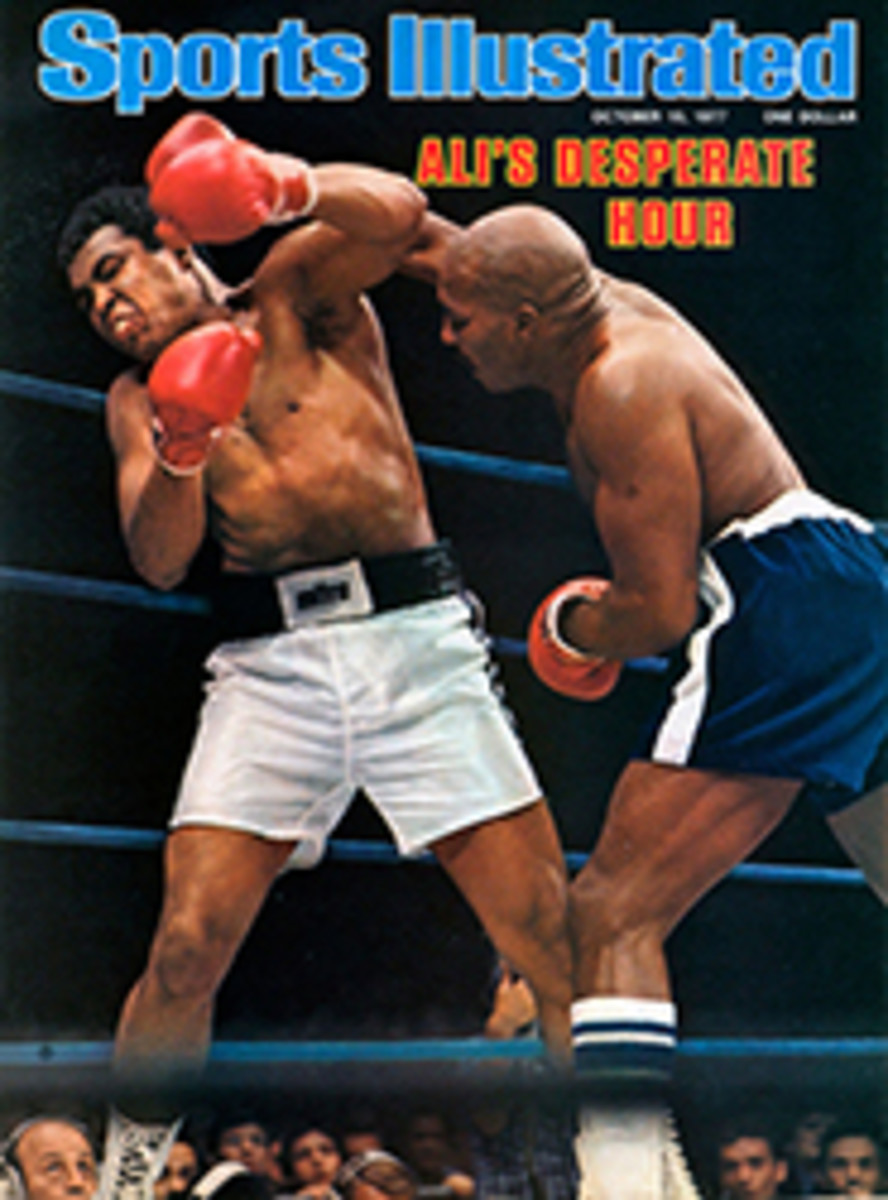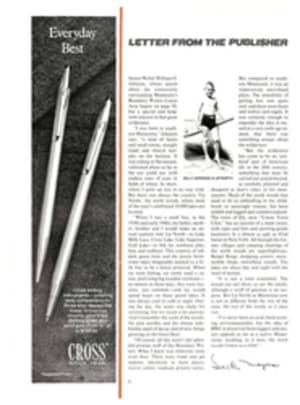
THE IRON MAN KEEPS GOING STRONG
"Fans, for the past two weeks you have been reading about a bad break I got. Yet today I consider myself the luckiest man on the face of the earth." The day was July 4, 1939 and Lou Gehrig, the Yankees' 36-year-old first baseman, was dying. His farewell words echoed through the hushed crowd at Yankee Stadium. Three years later Gary Cooper portrayed Gehrig in The Pride of the Yankees, and his re-creation of the speech was heard by millions of moviegoers. Since then it has been heard over and over on television. In May of this year Gehrig's words reverberated again, this time in an empty, refurbished Yankee Stadium. Groundskeepers stopped work to listen as Actor Ed Hermann's voice blared through the loudspeakers. An audio crew stood by to duplicate the precise echoes of the original delivery. Hermann's rendition, recorded for a television special entitled A Love Affair: The Eleanor and Lou Gehrig Story (Oct. 9, NBC), hauntingly reminds us of that day in 1939 when the Iron Man said goodby.
The Gehrig Story is an ideal time-out for those who are saturated with baseball, who have endured an endless summer of innings and still have the World Series ahead. And those viewers who do not care for baseball should tune in, too. Vintage black and white film of No. 4 rounding the bases is all the game action there is in the two-hour drama. The producers have spared the audience the embarrassment of watching actors field and bat. If only the clubhouse scenes had been eliminated, too—the scripted locker-room chatter is the show's most glaring weakness. Its strength lies in the retelling of the love affair between Gehrig and his wife. Thereby it differs from Pride, which focused on Gehrig's life in baseball.
The TV screenplay is adapted from My Luke and I, a book written by Gehrig's widow Eleanor and New York Times Sportswriter Joe Durso that filters Gehrig's life through her recollections. Blythe Danner is superb as the young Eleanor and she also narrates the film in a husky voice similar to that of the present-day Eleanor, who is 72. Hermann, who was Franklin D. Roosevelt in ABC's Eleanor and Franklin last spring, plays the shy first baseman who escapes the overbearing influence of his German-born mother (Patricia Neal). Ramon Bieri, a spittin' image of Babe Ruth, has the part that the Babe himself had in Pride. In casting Hermann and Bieri, Producer David Manson had to give consideration to both cinema and baseball history. "Everyone knows what Babe Ruth looked like, but they all think that Gehrig looked like Gary Cooper," he says.
Hermann will not win any Cooper look-alike contests but his zealous approach to his role has resulted in a first-rate performance. In April, Hermann worked out with Yale's baseball team, not because he needed to learn how to hit but because he wanted to understand how Gehrig felt when he knew he would never hit again. He traveled to Cooperstown to look at the Hall of Fame's collection of Gehrig's baseball paraphernalia. He went to Louisville where he asked Hillerich and Bradsby to manufacture a bat identical to the slim-handled model that Gehrig used. He spent afternoons at Shea Stadium, talking to players about the mental strength that Gehrig needed to play 2,130 consecutive games. He lunched with Hank Greenberg, talked with Mrs. Gehrig in her New York apartment and studied news film of Gehrig's farewell speech.
"It was a fulfillment of a dream," says Hermann, who grew up a Tiger fan in Detroit. "I have always looked on baseball players as exalted. I get watery knees whenever I talk to athletes." Mets clubhouse man Herb Norman now holds Hermann in similar regard, and to show it he gave Hermann one of Yogi Berra's shirts and one of Casey Stengel's road uniforms before the actor left for the West Coast to begin 3½ weeks of filming. "If I ever get rich I may give them to some museum," says Hermann.
In television, richness is usually measured in ratings. If The Gehrig Story succeeds as other TV movies with sports themes have, then Hermann may be ready to send his mementos to a museum as soon as Nielsen's numbers are announced. The show certainly fits the success mold perfectly; in previous hit sports dramas a main character invariably was suffering from an incurable disease or sustained an injury that ended his career. In Brian's Song and Babe the athletes (Brian Piccolo and Babe Zaharias) died of cancer. In Something for Joey Penn State football star John Cappelletti's younger brother died of leukemia. All of these programs attracted huge prime-time audiences.
With the emergence of sport-drama as smash television fare has come a tendency to alter the facts for effect. Call it dramatic license—or chalk it up, as Hermann does, to "where is the drama in withdrawing?"—and it becomes more understandable that the book's description of Eleanor's relationship with her mother-in-law differs from the TV version. In My Luke and I Eleanor withdraws from conflict by leaving Lou's parents' home; in the TV show there is a scene in which the women confront each other. In the TV movie Eleanor visits the Mayo Clinic, a trip that never took place. She learned of her husband's illness over the telephone.
It is unfortunate that while so much attention was paid to getting the right echoes during Gehrig's speech and to understanding his character, similar devotion to accuracy was not observed in the retelling of his life. If it were not for the errors made for dramatic effect, the Gehrig Story would be the equivalent of a perfect game.
PHOTO
DANNER AND HERMANN ARE TOP-NOTCH AS ELEANOR AND LOU

